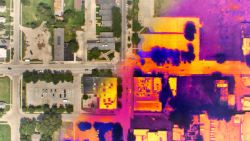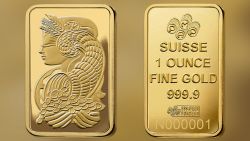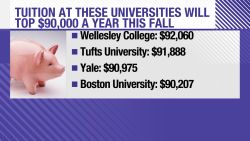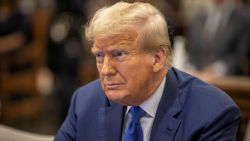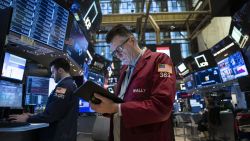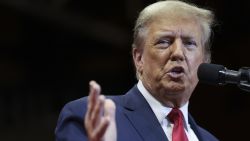The Dow soared Monday and US stocks scored their third straight rally as investors grew increasingly optimistic about a potential resolution to the the trade war and a limit to its economic fallout.
Although President Donald Trump has repeatedly fanned the trade war flames, he tweeted Sunday that the United States and China were “talking.” He also tried to tamp down recession fears, tweeting that an end of the trade war would help boost the US economy.
Also boosting stocks was China’s response to its slowing economy, which has been rocked by the trade war. The People’s Bank of China on Saturday announced it will making corporate borrowing easier and cheaper, aiming to support growth and employment. It is effectively a rate cut.
Investors, on edge after last week’s tumultuous trading, ate it up. The Dow (INDU) rose about 250 points, or 1%. The S&P 500 (SPX) jumped 1.2% and the Nasdaq (COMP) 1.4%. The VIX, a measure of market volatility that has been elevated lately, fell 9%.
Stock traders focused on the White House’s rosy view of the future – and not economists’ increasingly negative outlook. The National Association for Business Economics released a report Monday that said 74% of US economists believe a recession is coming in the next two years.
The yield curve inverted between 10-year and 2-year US Treasury bonds last week, spooking the markets and investors about the potential of a US recession in the next few years. An inverted yield curve has preceded every recession in the modern era.
A plurality of economists (38%) believe a recession will begin in 2020. But in some ways, economists are increasingly optimistic. Far fewer economists believe a recession will come this year, and a growing number believe a recession will take place in 2021 rather than next year, according to the survey.
Huge gains and losses have become the new normal on Wall Street. The Dow was up or down triple digits every day last week, including an 800-point loss on Wednesday – the worst day of the year for stocks.
Optimism about financial stimulus in the United States, Europe and China has buoyed stocks in the past few sessions. As the global economy sputters, central banks across the world are promising rate cuts, balance sheet growth and forms of more direct stimulus to help shore up the respective regions’ economies.
Trump continued to complain about the Federal Reserve, calling for a 1 percentage point cut in interest rates. He also suggested the central bank step up restart quantitative easing, the extraordinary policy measures first implemented during the Great Recession aimed at stimulating the economy.







